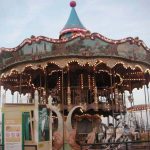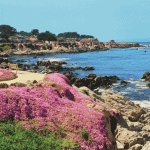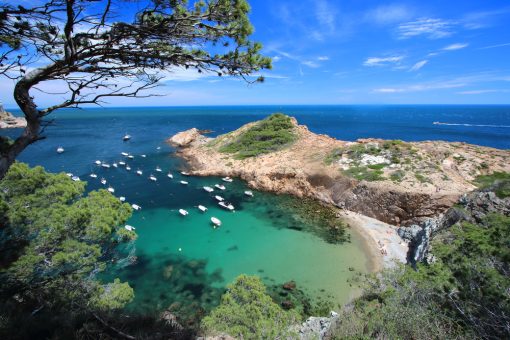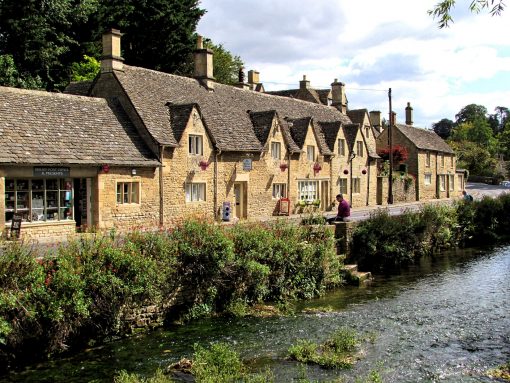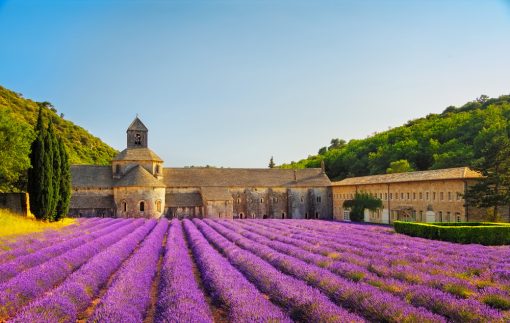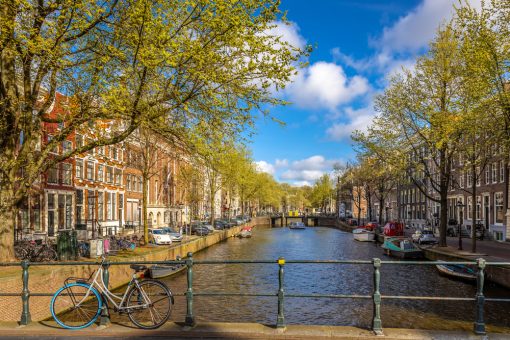When you imagine medieval European castles, Romania probably isn’t the first place that comes to mind. With so many stunningly preserved castles throughout the entirety of Western Europe, it’s easy to overlook the magnificent Transylvanian castles – but you shouldn’t!
Though the region is most famous for the infamous Dracula’s Castle of Transylvania, aka Bran Castle, there are plenty more impressive castles in Transylvania to explore. Spend some time exploring this stunning region of Romania to check out some of Transylvania’s best castles. And if you want more to explore, check out the region’s UNESCO-listed villages with Fortified Churches.
Where Is Transylvania?
Transylvania is a region of central Romania knowns for its scenic beauty, as well as its association with vampires and other supernatural creatures. The region is bounded by the Carpathian Mountains, and its name literally means “beyond the woods.”
Transylvania’s history dates back to the Roman Empire, and has been home to many different cultures over the years. Today, the region is a popular tourist destination, and is known for its scenic beauty, its traditional architecture, its unique folklore, and of course, the stunning Transylvanian castles.
How To Get To Transylvania
You’ll likely arrive in Transylvania from either Budapest or Bucharest, the two most populous nearby cities. From either of these cities, there are a number of different options to get to Transylvania.
The Transylvanian plateau is quite large, so you should decide first where you want to base yourself within the region before deciding how you will get there. The best way to do this is narrow down the things you wish to see most and pick a base that is the most central. Brasov, Sibiu, or Cluj-Napoca are all popular options. A link to Google maps has been included for all the castles below. This should help you plan your road trip to visit these castles.
Transportation within Transylvania can be a challenge. If you rent a car and self drive, be prepared for aggressive and erratic drivers. Other transportation choices include the train, or a tour which lets you leave the planning and driving to someone else.
Best Time To Visit the Castles of Transylvania
In general, visiting the Transylvanian castles is a great activity for late spring or early fall, since the weather is at its best and is much less crowded. However, depending on your interests, you may want to adjust your schedule a bit depending on the particular castle and any special eventss.
- Bran Castle is a great option for mid-to-late fall, as there are some seriously spooky Halloween events that take place at the castle and in the surrounding area near Bran.
- The Transylvanian castles that have the best gardens, such as Karolyi Castle and Criș Bethlen Castle, are definitely great options for late spring and early summer, so you’ll get the full garden experience, complete with the floral aromas wafting through the air.
- Cantacuzino Castle is delightful in winter, the village of Bușteni is sheer magic when covered in a blanket of snow.
Or, as I believe, the best time to go is whenever it works into your schedule.
Castles in Transylvania
Here are 12 Transylvanian castles worth visiting. Listed in alphabetical order, because everyone’s favorite will be different.
Bánffy Castle
Bánffy Castle is a short drive from Cluj-Napoca, in the village of Bonţida, made famous by the internationally acclaimed Electric Castle music festival. A Gothic style castle that was built in the 14th century, the castle has been remodeled several times over the centuries. In the 17th and 18th centuries it was given a (much-needed) Baroque makeover.
The castle has a long and rich history, having been the seat of the Bánffy family for centuries. The family played an important role in Transylvanian politics and culture, and the castle was often visited by notable figures such as King Matthias Corvinus of Hungary and Vlad Țepeș, the infamous ruler of Wallachia.
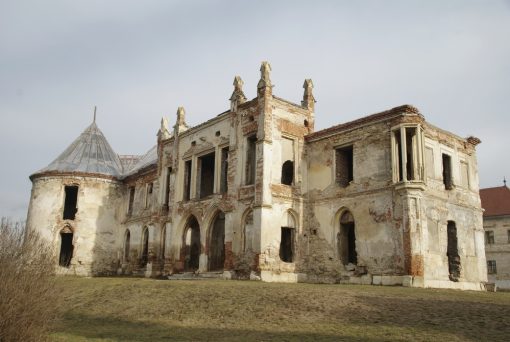
The castle complex consists of three main buildings: the Palace, the Big House, and the Hunting Lodge. The Palace is the oldest part of the castle and contains the most interesting rooms, including the Throne Room, the Banqueting Hall, and the Hunting Room. The Big House was built in the 16th century and contains a large hall that was used for balls and other events. The Hunting Lodge was built in the 17th century and served as a residence for the castle’s owners. There is also a museum that houses a collection of artifacts from the castle’s history, as well as a library with a large collection of books and manuscripts.
The castle grounds are also home to a beautiful park, originally designed in the 17th century. The park is open to the public and is a great place to take a stroll or have a picnic. With its picturesque park and gardens, this Transylvanian castle has earned itself the nickname of ‘Versailles of Transylvania.”
The castle is open to visitors, though most of its fame comes from Electric Castle, a music festival that debuted in 2013.
Official website here.
Closest City: Cluj-Napoca
Google Maps: Bánffy Castle
Bran Castle
Bran Castle of Transylvania is a national monument and the most famous landmark in Romania. This is a heavy favorite with tourists from the world over, and for many visitors, the reason they plan a visit. The castle is also known as “Dracula’s Castle in Transylvania”, as it is commonly associated with the legend of Count Dracula and Transylvania vampires, thanks to Bram Stoker’s famous novel, Dracula.
Bran Castle was built in the 13th century and has been home to many different families over the years and served many different purposes. It was first used as a military fortress between Wallachia and Transylvania, and later became a royal residence. Though Vlad Dracul, aka Vlad the Impaler, aka Vlad Dracula, never actually lived in the castle, historical records show he was imprisoned here for two months during his life.
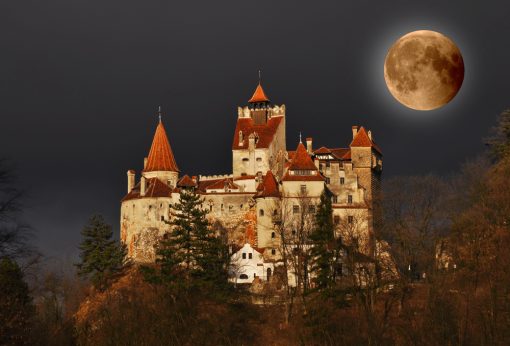
The eerily picturesque location of Bran Castle, on a hilltop in the Carpathian Mountains, offers stunning views of the surrounding countryside and Transylvanian forests. Visitors to Bran Castle can explore its many rooms and corridors, which, although not as ornate as some of Western Europe’s castles, are still interesting to get lost in and feel the lasting history.
Bran Castle is a must-see for anyone interested in the legend of Dracula, or in Romanian history and culture. It’s an easy day trip from Brasov, making it almost one of the most accessible castles in Transylvania. There are a number of yearly events at Bran Castle, with the tour de force being the annual Halloween party that takes place over the course of a few days during Halloween time.
Official website here.
Closest City: Brașov
Google Maps: Bran Castle
Cantacuzino Castle
In the stunningly beautiful mountain village of Bușteni lies Cantacuzino Castle. Located among the mountains in Prahova Valley, this small, rather unassuming castle is worth a visit during your time in Transylvania.
It’s much newer in comparison to some of the other castles of Transylvania; the Cantacuzino family built it in the early 1900s. Despite its small size, the castle boasts beautiful gardens on sprawling grounds amid the Carpathian Mountains.
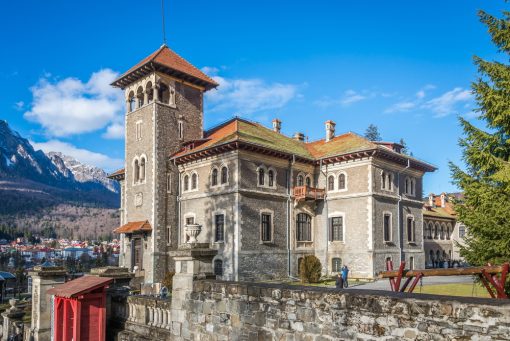
The village of Bușteni has a long history, dating back to the Middle Ages. The first written mention of the village dates back to the year 1247. In the centuries that followed, the village was often fought over by different armies and changed hands several times.
Bușteni itself is highly worthy of a visit, particularly during the winter months, when ski and snowboard enthusiasts descend upon the village. If you want to check out the castle’s gardens, however, you should visit during spring or summer. You’ll still be able to enjoy the many outdoor activities in the mountains.
Even though it doesn’t have the extensive history that some of the other castles have, Cantacuzino Castle is still worth a visit.
Official website here.
Closest City: Brașov
Google Maps: Cantacuzino Castle
Corvin Castle
As with many of the castles of Transylvania, Corvin Castle goes by a number of different names. Hunedoara Castle, Hunyadi Castle, and Castelul Corvin all refer to this magnificent structure in Hunedoara.
When you first catch sight of Corvin Castle, you’ll be awestruck by its size. The castle spans over three acres and has walls that are up to 25 feet thick in some places. The intricate stonework is mostly well-preserved, though in some spots it’s in need of repair. The imposing turrets with their red-spired roofs are one of the castle’s most distinctive features. Corvin Castle is one of the largest castles in Europe, so you might be surprised that Hunedoara is seemingly in the middle of nowhere in southwest Transylvania.
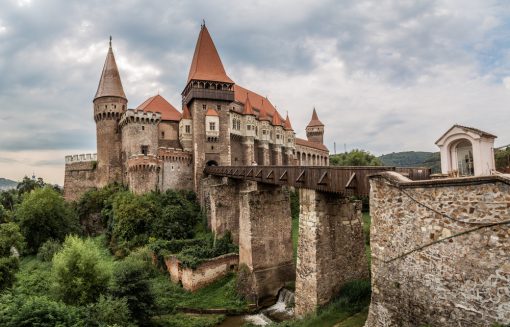
As you explore the castle, you’ll find a number of impressive features, including an armory, a torture room, and a secret passage that leads to the nearby river. If you’re interested in the history of Corvin Castle, there are a number of tours that are available that will take you through the castle’s many rooms and tell you about the people who once called this place home. After exploring the castle, be sure to walk around the grounds and take in the stunning views of the surrounding countryside. Most visitors to Corvin Castle love to take photos from the drawbridge that traverses the Zlasti River, which forms its moat.
Official website here. The site is in Romanian, so use a translate to English option.
Closest City: Hunedoara or Dev
Google Maps: Corvin Castle
Criș Bethlen Castle
In the tiny village of Criș in Alba County lies Criș Bethlen Castle, one of Transylvania’s lesser known castles. The castle dates back as early as 1305, when it was documented to be the home of the original Bethlen owners. The Bethlen family still owns it today. They do extensive work on the castle and the surrounding village of Criș in order to preserve the area and restore it to its former glory.
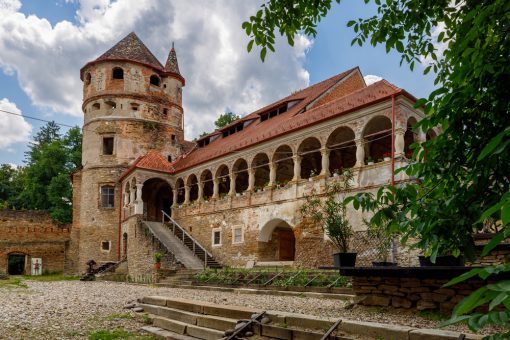
This is one of the most beautiful Renaissance castle in all of Romania. Visit for its majestic beauty and history, without many of the kitschy tourist shops and crowds that come with other Transylvanian castles.
The best time to visit Criș Bethlen Castle is in the late spring or early summer, when the gardens are in full bloom and you can stroll about the castle grounds.
No official website.
Closest City: Sighișoara
Google Maps: Criș Bethlen Castle
Jidvei Castle
Jidvei Castle, also known as Bethlen-Haller Castle, is among the lesser-known castles of Transylvania. It’s impressive nonetheless. Reminiscent of something out of a Disney fairytale, it is conveniently located en route between Medias and Alba-Iulia in Cetatea de Balta.
Initially constructed in the late 16th century in Renaissance style, it has undergone several renovations that added many Baroque features. This amalgam of architectural styles makes it one of the most unique Transylvanian castles on this list.
If you’re into spooky lore, you’ll definitely want to head to the Reformed Church that is adjacent to Jidvei Castle. According to local legend, the ghost of Count Haller haunts the castle. The Count’s driver had been having an affair with the Countess, and killed the Count in a fit of jealous rage. Many of the Romanian castles are surrounded in legends, myths, or a fairy tale.
The castle is now open to the public as a museum. Visitors can explore the castle’s many rooms and corridors, and learn about its history from the exhibits on display.
This is one of the few Transylvanian castles that you can actually spend the night in. There are a number of guest rooms and suites from which you can choose. The castle can also be reserved for different types of private events, either inside or outside in the immaculate gardens. If you’re a wine lover,plan to visit during one of Jidvei winery’s annual events.
Official website here.
Closest City: Medias / Alba Iulia
Google Maps: Jidvei Castle
Károlyi Castle
Károlyi Castle is the closest of the Transylvanian Castles to Satu Mare. It was built in the 13th century by the Order of Saint John of Jerusalem, and later served as a residence for the Károlyi family. The castle has been restored and is now open to the public as a museum.
The castle has a number of features that add to its picturesque beauty, including its position atop a hill and circular towers. It is a beautiful example of medieval architecture. Visitors can explore the castle’s grounds, which include a chapel and a courtyard, as well as the museum with exhibits on the history of the Károlyi family and the castle itself.
Known for its history and architeture, Károlyi Castle is a popular tourist destination. It’s considered a must-see for castle lovers visiting Romania. The castle is often booked for private events. This will make the castle interior off limits, but visitors can still wander around the outdoor grounds.
More info about the castle here. Booking information here.
Closest City: Satu Mare
Google Maps: Károlyi Castle
Kornis Castle
Nearby to Banffy Castle and the village of Bistrita is Kornis Castle – well, the ruins of Kornis Castle, affectionately known as the Castle with Unicorns. It was once known and loved for its fairytale-like unicorn statues that flanked the entrance to the castle. However, today, you won’t the unicorn statues. They’ve been removed after a failed attempt by someone trying to steal them.
Kornis Castle’s history is one of despondence, unfortunately. The structure received extensive damage during the World Wars, particularly during World War II. Following that, the Communists arrived, and burned Kornis Castle’s incredible library collection.
Ruins, particularly castle ruins, hold tremendous remnants of history, but there is no actual castle to explore here. If you’re into ancient relics, ruins, and history, and want to see first-hand the effects of war and communism, go check out Kornis Castle in Transylvania.
Information about the castle here.
Closest City: Cluj-Napoca
Google Maps: Kornis Castle
Lázár Castle
Lázár Castle is a located in Lazarea in Harghita County. The Lázár family has owned the castle for many generations, and have been able to maintain it in good condition and preserve its history. The castle has a long history that is reflected in its architecture. It was first built as a simple dwelling in the 14th century, then, over time, it was expanded and transformed into the imposing structure that it is today. This evolution is evident in the different styles of architecture that can be seen throughout the castle.
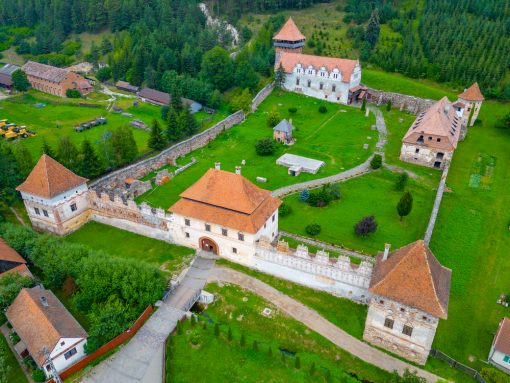
In 2014, the Lázár family decided to open it up to the public. Visitors can now explore the different areas of the castle, including the garden, the chapel, and the museum. Although the castle isn’t exactly a popular tourist destination in Romania, it is a beautiful example of architecture and offers interesting insight into the region’s fascinating history.
Unfortunately, the castle is not currently open to the public. There is an ongoing dispute over ownership of the property that is likely to take years to resolve.
No official website.
Closest City: Cluj-Napoca
Google Maps: Lázár Castle
2. Peleș Castle
If you want to get technical, Peleș Castle is actually in the region of Wallachia, not Transylvania. However, given its close proximity to the region’s border coupled with its stunning beauty, it makes this list. Peleș Castle is located in the town of Sinaia, about 50 miles north of Bucharest and 25 miles south of Brașov.
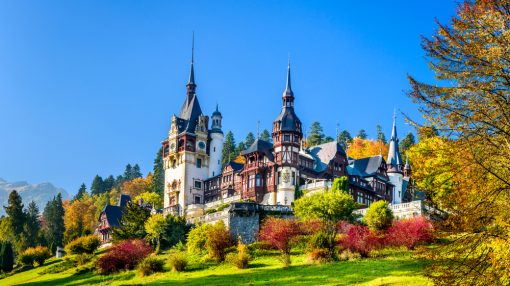
If you’re looking for a breathtaking castle to explore in Romania, look no further than Peleș Castle. This beautiful Neo-Renaissance castle was built between 1873 and 1914 by King Carol I of Romania. It was the first European castle to be entirely equipped with electricity. It also has one of the largest collections of art in Romania.
Visitors can tour the inside of the castle, which includes more than 170 rooms decorated with lavish furniture and tapestries.
More info here.
Closest City: Brașov
Google Maps: Peleș Castle
Sükösd-Bethlen Castle
Sükösd-Bethlen Castle is located in the town of Racoș, in the Brașov County of Transylvania. It was built in the 13th century and originally served as a stronghold. In the 16th century, the castle was expanded by the renowned Bethlen family. Today, it is in a state of semi-ruin and is not open to the public.
The castle has a rectangular layout with four towers at each corner. The main entrance is located on the south side and leads into a courtyard. The castle also has a chapel, which is located on the second floor. The castle is in a precarious state. Parts of it are in ruins and, for safety reasons, it’s not open. However, if you’d like to tour the inner courtyard, you can make advance arrangements and the keeper (who lives just down the street) will let you in. You are obligated to stay in the courtyard and not going wandering all about.
Other things worth visiting in the area include the dormant Racos Volcano and Racos Lake. Rupea Fortress is also nearby. Wile it’s not a castle, it’s still a pretty impressive structure. If you’re staying in Brasov, make a day trip out of it and go see the surrounding sights in Racos.
No official website.
Closest City: Brașov
Google Maps: Sükösd-Bethlen Castle
Teleki Castle
If you head to Gornești village in Mureș County, you’ll come across Teleki Castle. One of the most beautiful and lavish castles in Transylvania, Teleki Castle was first built by Laszlo Teleki at the end of the 18th century. Similar to many other castles in the region, it suffered extensive damage during WWII and in the subsequent Communism era. Some of its scars still remain today, however, the Baroque building is nevertheless quite beautiful.
The family is actively renovating Teleki Castle hopes to open it regularly to the public in the near future. Today, the castle is open only sporadically to the public. You can check the calendar to see when it will be open and plan your visit.
Official website here.
Closest City: Târgu Mureș
Google Maps: Teleki Castle
You might also enjoy
Mary Jo Manzanares is a founder and the editor-in-chief of The Traveler’s Way, an online travel magazine proving informational and inspirational travel recommendations for curious Baby Boomer travelers. She has been a speaker at various industry events and has a personal travel blog at Traveling with MJ. When she’s not traveling, Mary Jo likes lingering over a cup of coffee, wandering in a museum, sipping wine at a cafe, and sharing it all with friends and readers. Mary Jo’s top travel destinations are Italy, Portugal, and the Caribbean.


